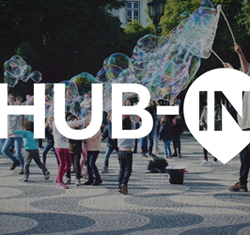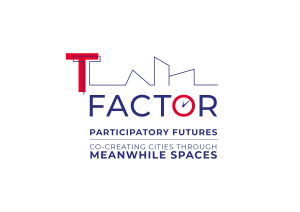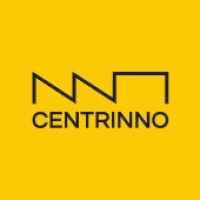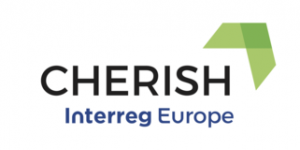Find out about current projects in the field of cultural heritage These are mainly current European projects in the field of Cultural Heritage which are underway but not yet complete.
INHERIT  From October 2023 to March 2027 | INHERIT is an EU-funded project aimed at promoting energy and resource efficiency, sustainability, resilience, and inclusiveness of cultural heritage buildings. Within the project, eight demonstration sites across Europe will be used as testbeds of innovative technologies to achieve these goals while maintaining their cultural heritage value. Through INHERIT, pioneering renovation solutions, accompanied by the latest information and communication technologies, will be tested in historic buildings located in Croatia, France, Greece, Latvia, Poland, Spain, Sweden, and Turkey. | For more information about the project, click here |
 HUB-IN From 1 September 2020 To February 2025 | HUB-IN aims to foster innovation and entrepreneurship in Historic Urban Areas (HUA), while preserving the unique identity of the historic sites regarding their natural, cultural and social values. HUB-IN adopts innovation and entrepreneurship as the main drivers of urban regeneration in HUAs in line with the International agendas for Cultural Sustainable Development (UNESCO) and Cultural Heritage Strategy (Council Europe). HUB-IN will have two main stages. In the first stage, a network of Hubs of innovation and entrepreneurship (Hubs) will be developed in the HUAs of 8 city partners (Lisbon, Slovenska Bistrica, Brasov, Nicosia, Genova, Grand Angoulême, Belfast, Utrecht) and in the second stage, the resulting methods and tools will be upscaled to a global network of HUAs of follower cities. The HUB-IN project’s vision is to contribute to reversing trends of abandonment and neglect of historic heritage in a systemic way through the creation of networks of Hubs where innovation will be the main driver. The project will also have a direct impact on the creation of new sustainable opportunities for local traditional businesses and for the development of new creative skills and jobs. | For latest updates on the project, visit our News page and find further information about HUB-IN here |
 T-Factor Heritage, culture and creativity for urban regeneration From1 June 2020 to 31 May 2024 | The EU Horizon 2020 funded project T-Factor questions the waiting time in urban regeneration. This is the time between an intervention request and its implementation to prove how culture, creative collaboration and stakeholder engagement can release vigorous urban centres of inclusive urban (re)generation, social innovation and business. The project considers early-stage regenerations in the historical centres of Amsterdam, Bilbao, Kaunas, Lisbon, London and Milan, and provides their public-private partnerships with a special ecosystem of capacity building for extensive new city-making projects. T-Factor is a “sister” project to HUB-IN | For more information on the project and activities to date click here |
 CENTRINNO – New CENTRalities in INdustrial areas as engines for inNOvation and urban transformation From 1 September 2020 to 29 February 2024 | CENTRINNO aims to develop and demonstrate strategies, approaches and solutions for regeneration of industrial historic sites and areas as creative production and manufacturing hubs, that 1) hold true to the ecological challenges of our time, 2) boost a diverse, inclusive and innovative urban economy, and 3) use heritage as a catalyst for innovation and social inclusion. CENTRINNO is a “sister” project to HUB-IN | For more information on the project and activities to date click here. |
 SmartCulTour Smart Cultural Tourism as a Driver of Sustainable Development of European Regions From 1 January 2020 to 30 June 2023 | SmartCulTour aims to support regional development in European regions, with special attention to rural peripheries and the urban fringe, through sustainable cultural tourism. the main objective of SmartCulTour relates to the facilitation of community-led rural development through field experimentation in 6 living labs. Prior to these living labs, a comprehensive desk research will identify significant sustainable cultural tourism policies, their impacts and critical success factors. These best cases will inspire a series of possible local interventions. | For more information click here |
 Creating opportunities for regional growth through promoting Cultural HERitage of fISHing communities in Europe From 1 June 2018 to 31 May 2023 | The main objective of CHERISH is to improve regional development policies to protect and promote cultural heritage in fishing communities in order to boost attractiveness of these regions for businesses, citizens and tourists. The main objective of CHERISH is to improve regional development policies to protect and promote cultural heritage in fishing communities in order to boost attractiveness of these regions for businesses, citizens and tourists. The EU recognizes the valuable role of their cultural heritage for sustainable development and stimulates increased efforts to better position and profile the fishing communities, including it’s intangible heritage, like myths to daily practices, traditions, ecological knowledge and crafts. Through the development and implementation of new strategies utilising cultural assets of fishing communities new jobs and new products or services are created as well. | For more information and updates on the project click here |
